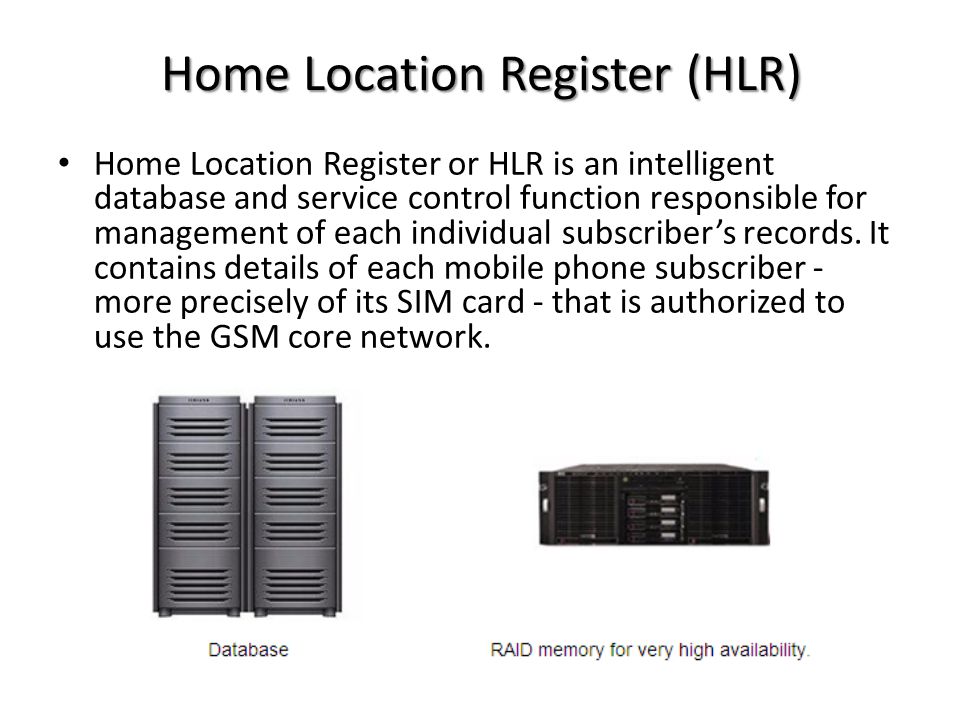HLR
The home location register (HLR) is a central database that contains details of each mobile phone subscriber that is authorized to use the GSM core network. There can be several logical, and physical, HLRs per public land mobile network (PLMN), though one international mobile subscriber identity (IMSI)/MSISDN pair can be associated with only one logical HLR (which can span several physical nodes) at a time.
The HLRs store details of every SIM card issued by the mobile phone operator. Each SIM has a unique identifier called an IMSI which is the primary key to each HLR record.
Another important item of data associated with the SIM are the MSISDNs, which are the telephone numbers used by mobile phones to make and receive calls. The primary MSISDN is the number used for making and receiving voice calls and SMS, but it is possible for a SIM to have other secondary MSISDNs associated with it for fax and data calls. Each MSISDN is also a primary key to the HLR record. The HLR data is stored for as long as a subscriber remains with the mobile phone operator.
Examples of other data stored in the HLR against an IMSI record is:
- GSM services that the subscriber has requested or been given.
- GPRS settings to allow the subscriber to access packet services.
- Current location of subscriber (VLR and serving GPRS support node/SGSN).
- Call divert settings applicable for each associated MSISDN.
The HLR is a system which directly receives and processes MAP transactions and messages from elements in the GSM network, for example, the location update messages received as mobile phones roam around.

